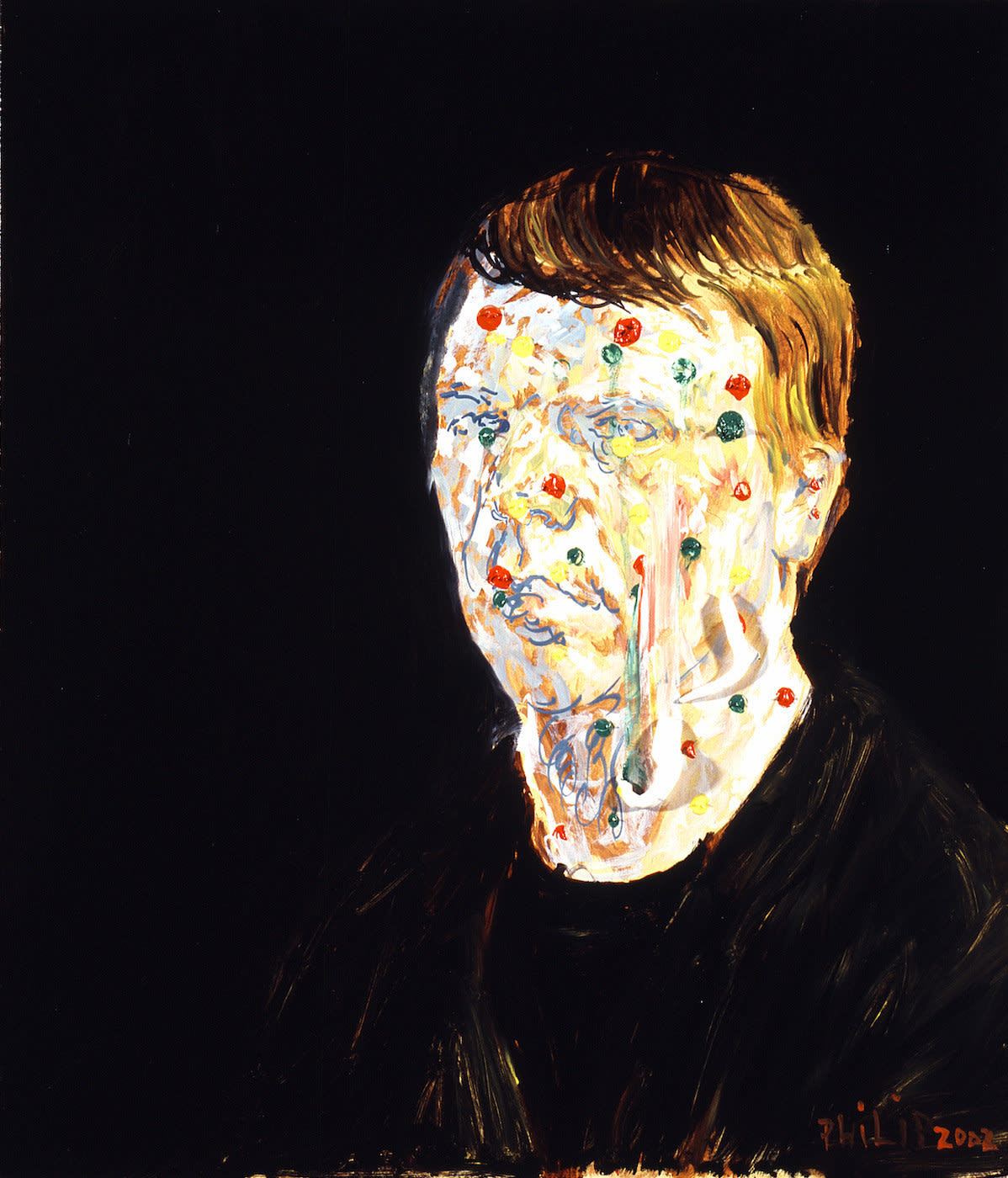Philip Akkerman
Since 1981, Philip Akkerman has been painting exclusively self-portraits. Day after day, Akkerman executes his paintings on three different panel sizes and has produced over two thousand paintings by now.
In the seventeenth century in Holland, Rembrandt started to paint tronies: pictures of models, himself or a colleague, sometimes in oriental costume. They were meant as studies of expression, type, physiognomy, or any kind of interesting character like an old man, a young woman, an exotic person, and never served as portraits. Garments that looked foreign, antique or luxurious were of interest and offered opportunities to show off painterly techniques. Rembrandt had more freedom to experiment in a tronie than in a commissioned portrait, and he used them to practice depicting different poses and expressions. Tronies were very thought after and perhaps the most famous example of this genre is Vermeer’s Girl with a Pearl Earring.
For sure, Akkerman is very much indebted to this heritage and many of his paintings reference to his predecessor Rembrandt. However, Akkerman’s restriction to his own countenance has led to an exploration of painting’s possibilities and references. These portraits bear witness to his virtuoso flypast through art history. From Rembrandt by way of Van Gogh up to the pointillist dissolution of the physiognomy, from Beckmann by way of Picabia up to the psychedelic distortion of facial features – numerous quotations, epochs, techniques and styles can be found.
In a certain way, Akkerman’s artistic method follows a conceptual plan. Although it is easy to compare his artistic output with self portraits by the old masters, in fact Akkerman might have more in common with Cindy Sherman’s self re-contextualizations. Also, On Kawara’s Date Paintings come to mind. Both Akkerman and Kawara share a rigorous methodical approach. Although Kawara’s paintings might be perceived as pure conceptual, Akkerman’s paintings, although a continuation of the seventeenth-century genre, are not made with the same intention: the self-portraits are mere paintings, and do not reveal much of the likeliness of the artist. By means of the constant replication of his own face, he abstracts from his motif so that his physiognomy becomes a serial backdrop against which a highly varying and extremely productive way of working can be tested. Keeping to a traditional glazing technique and sharing a traditional genre, the portraits can nevertheless not be read in any conventional way. Head and face are subjected to constant transformation by means of diverse backdrops and disguises, whereby the portraits resist any psychological interpretation and character revelation.
Philip Akkerman lives and works in The Hague. Akkerman has had numerous solo exhibitions in Dutch museums. His work is included in the collections of the Stedelijk Museum, Amsterdam and the Hirshhorn Museum, Washington DC.
Provenance
galerie bob van orsouw, Zürich, 2006Private collection, New York
